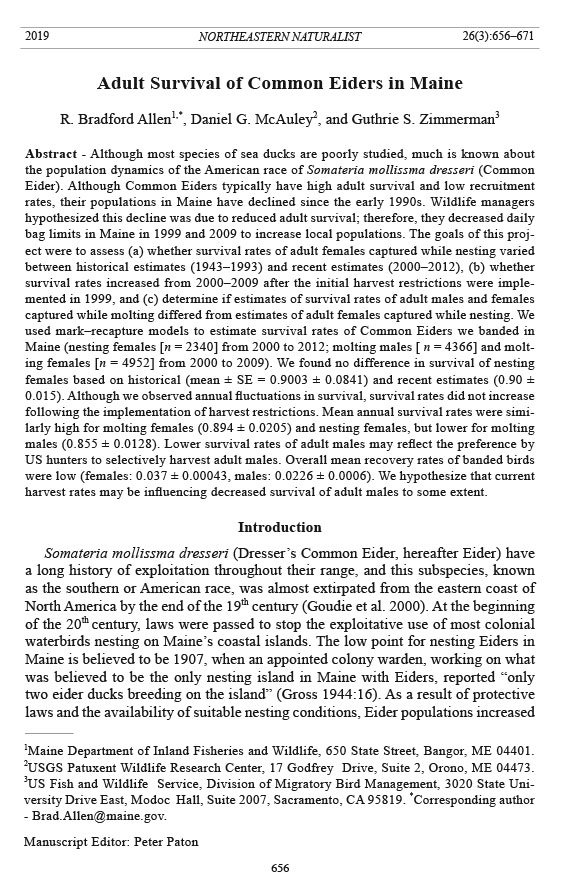Adult Survival of Common Eiders in Maine
R. Bradford Allen, Daniel G. McAuley, and Guthrie S. Zimmerman
Northeastern Naturalist, Volume 26, Issue 3 (2019): 656–671
Full-text pdf (Accessible only to subscribers. To subscribe click here.)

Access Journal Content
Open access browsing of table of contents and abstract pages. Full text pdfs available for download for subscribers.
Check out NENA's latest Monograph:











